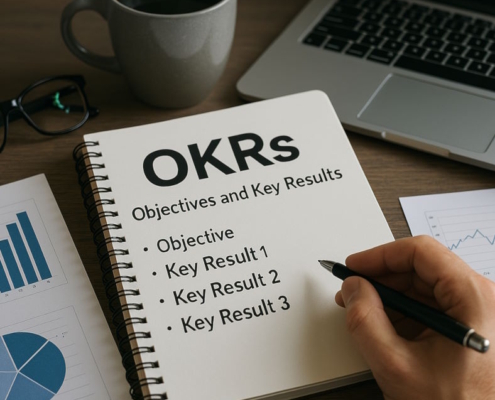How to transfer LLC ownership
Two common ways to transfer LLC ownership are to conduct a partial sale or sell your entire LLC to a third party.
By Brad Nakase, Attorney
Email | Call (888) 600-8654
You can only transfer an LLC’s ownership interests if all the other LLC owners agree, and even then, only if the state law allows for it. At some point in an entrepreneur’s journey as a business owner, it may come time to sell, depart, or change ownership of his or her limited liability company (LLC). There are two primary ways of transferring ownership of an LLC.
- Transferring partial interest in a limited liability company. This arrangement applies if a business owner is not intent on selling the entire business, or if he or she does not have 100% ownership.
- Selling a limited liability company. This arrangement applies if a business owner is transferring ownership of his or her entire business to another individual.
In this article, our attorney for LLC formation discusses how to transfer LLC ownership as follows:
How to Transfer Partial Ownership of an LLC
- Review the Operating Agreement and Articles of Organization
A limited liability company should have an operating agreement that details how the business will be run and managed. The operating agreement is a form of contract between the members of an LLC so that all involved understand operations and may agree on how various aspects of management and ownership will be handled.
An operating agreement might include provisions related to buying and selling ownership within the limited liability company. If so, then the operating agreement will provide the next steps one should take. The original Articles of Organization may also include a buy-sell agreement, so it would be wise for an owner to review these articles to ensure that everything is consistent.
If there are no buy-sell provisions in the company’s operating agreement or Articles of Organization, then it would be a good idea to look at the state’s business registration agency to see how to include these. It is recommended that a business owner consult an experienced attorney about how to process. If neither of these documents has a buy-sell provision, and it is not possible to add one, it may be necessary to dissolve the LLC.
- Follow the Buy-Sell Process in the Operating Agreement or Articles of Organization
It is important that the owner of the LLC follows the necessary steps involved in buying and selling. It is also crucial that they document each step of the process as it is completed. This might mean drafting a resolution for sale of part of the company. All involved parties will need to sign this resolution.
It is important to pay attention to the following:
- Getting agreement from the other members of the LLC
- Detailing exactly what the owner is selling as part of their membership stake
- Timing the sale appropriately so that other members are given notice
- Update the Relevant Documents and Notify Parties
After an individual has sold his or her ownership in the business, he or she will need to make some additional changes:
- Remove his or her name from the owners included in the operating agreement or the Articles of Incorporation
- Provide a membership certificate for the new owner
- Notify the relevant state business registration agency of the changes to membership. This may need to be done in one of the following ways, depending on the state:
- Filing “Articles of Amendment” with the state’s business registration agency
- Filing a “Statement of Information” with the state’s business registration agency
- Providing a notice of ownership change as part of the annual reporting requirements
- These forms must be signed by all members who have an ownership stake in the LLC
How to Sell an LLC and Transfer Total Ownership
Selling an LLC as a whole is more complicated. The following is an overview of that process.
- Review the Operating Agreement and Articles of Organization. An owner should review their operating agreement and Articles of Organization to review what they say regarding selling the business in its entirety.
- Figure Out What the Buyer Wants to Purchase. An owner will need to record exactly what it is the buyer is purchasing. Some buyers may wish to purchase the entire LLC, while others may simply want to purchase its assets.
- Create a Buy-Sell Agreement with the New Buyer. A buy-sell agreement will establish the key facts of the LLC sale, including the following: a) Whether the complete LLC is being bought. b) The specific assets involved in the sale. c) The timeline of the sale. d) The agreement of the LLC’s members who have an ownership stake. e) Any other important details related to the sale of the LLC.
- Consult with an Attorney. There are complicated tax, legal, and financial requirements involved in the sale of an LLC. It is highly recommended to consult an experienced business attorney who may draw up and manage the sale.
- Record the Sale with the State Business Registration Agency. An owner will need to inform the secretary of state or other business registration agency about the change in ownership. An attorney can explain this process.
- In some cases, depending on a state’s laws, an owner may not be able to transfer ownership of their business. Rather, the owner may need to dissolve their LLC so that the buyer can create a new one. Any assets will be transferred between the LLCs as stipulated in the buy-sell agreement.
Notifying Parties About the Transfer of Ownership
Regardless of whether an owner is transferring partial or complete ownership of his or her business, he or she will need to notify other interested parties.
- The Internal Revenue Service. The IRS will need to be informed about a change in ownership. This means the new owner may need to file for a different Employer Identification Number (EIN). It is also necessary to let the IRS know about any change in the Responsible Party for the LLC. The responsible party is “the person who has a level of control over, or entitlement to, the funds or assets in the entity that, as a practical matter, enables the individual, directly or indirectly, to control, manage or direct the entity and the disposition of its funds and assets.” A business owner may inform the IRS of the change by filing Form 8822-B.
- Banks and Other Financial Institutions. A business owner must also inform the bank or financial institution where the business has accounts that the ownership and control of the company is changing.
- States Where the LLC is Registered as a Foreign LLC. An LLC is required to register in every state where it conducts business. This means that there may be multiple states where an LLC is registered as a foreign LLC. It is therefore necessary to consult the different state business registration websites to see how to correctly notify them of changes in control and ownership.
- Registered Agent. The registered agent for an LLC is an individual or entity that receives formal letters, documents, and notices on behalf of the LLC. The registered agent may need to know about a change in control or ownership.
Have a quick question? We answered nearly 2000 FAQs.
See all blogs: Business | Corporate | Employment Law
Most recent blogs:
Contact our attorney.































